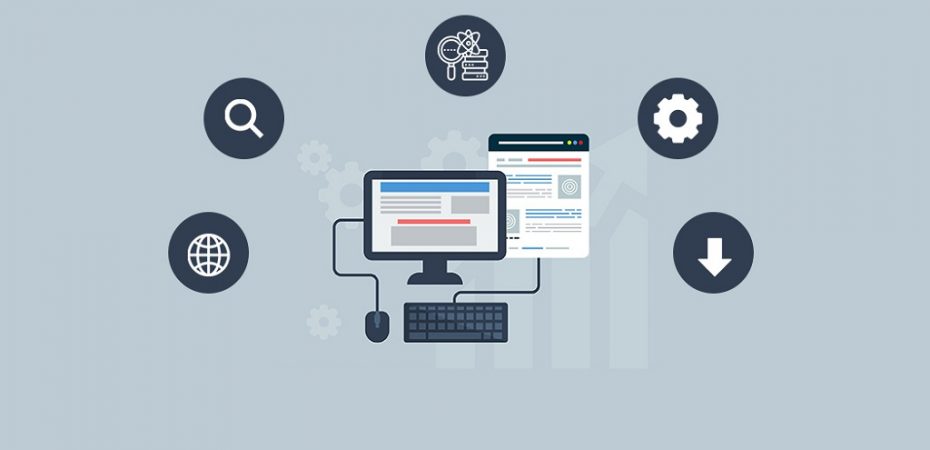Data is the currency of the 21st century, and it plays a significant role in running a business. Companies worldwide use data to identify weak points in their operation and improve them with new ideas. However, finding the correct data online is easier said than done as mountains of information go through the process.
Manual data extraction is practically impossible because it would take forever. That’s why businesses use unique software solutions called web scrapers. Stay with us, and we’ll explain how they work and how to extract data from a website successfully.
Defining data extraction (web scraping)
Web scraping is another term used for data extraction, a process of finding and extracting data from one or multiple sources on the internet. Once the data is collected, it is presented in an easy-to-read format as an excel table, CSV file, or a spreadsheet within the software.
Data extraction has been around since forever. People used to read through books looking for the information they needed. However, the amount of data generated daily in today’s world is impossible to get through manually. So today, people use special software solutions and tools designed to gather and extract information quickly. While the process is quite simple, web scrapers have to face all kinds of challenges before they get to the information, but we’ll get to that in a second.
How the scraping process works

Most web scrapers are automated, and all you have to do to find any type of information you need is to tell it where to look and what to look for. When you run the software, you have to provide the URLs of the websites where you want it to look for the data. It can be one site or many of them at the same time.
When the tool knows where to look, it copies every page’s HTML code and looks for the data you need. All you have to do is to enter the correct keyword, and the scraper will collect all information that relates to it. For example, let’s say that you want to find more details about prices and offers on Amazon, but you don’t want to scrape user reviews. Just specify the pages where you want the scraper to scan and wait to present all data in a spreadsheet document or as a CSV file.
Most common challenges of data extraction
You should always be aware of the fact that your competition and most other websites don’t want you digging through their pages for information. That’s why they use all kinds of countermeasures to prevent you from scraping information. Storing and organizing large amounts of data can also be a challenge. Here are some of the challenges you will have to face:
1. Anti-scraping techniques
Most websites, especially eCommerce platforms, use all kinds of anti-scraping techniques to prevent competitors from extracting information. These methods include IP blocking, dynamic coding, CAPTCHA, geo-restrictions, and many others designed in order to avoid web scraping bots from interacting with their websites. Unfortunately, proxies can effectively bypass most of these methods by changing your IP address.
2. Honeypot traps
Honeypot traps are a particular type of trap designed to detect and capture web scrapers in action. Website owners leave some pieces of information only a web crawler can find. When the crawlers are identified, they are banned from scanning the pages any further. However, if you set up a proxy to rotate your IP address every few minutes, these traps won’t have any effect.
3. Warehousing data
Large-scale data extraction offers the best data quality but also generates a massive amount of information. The trick is to filter the information and keep only the data you really need, but all of the data must be stored on your servers until you do that. That’s why you’ll need scalable data warehousing infrastructure that can cope with large volumes of data which is a challenge by itself.
4. Website structure changes
Many websites update their content and regularly interface to improve the quality of their services. Unfortunately, they often change the site’s structure to make these modifications, which means that you have to reconfigure your web scraper accordingly or get errors and low-quality data.
How proxies can help with these challenges
While proxies can’t help you organize your data warehouse or help you reconfigure your web scraper, they can go a long way when it comes to bypassing anti-scraping technologies. By changing your IP address, proxies can enable you to work around IP blocks and geo-restrictions. Even if the server identifies your web crawler, the proxy will just change the IP address allowing you to continue your scraping activities.
Conclusion
By now, you should have a general understanding on how to extract data from a website. Web scraping is a vital practice used by all types of businesses on their quest to improve their offers and grow at a steady pace. These software tools allow them to scan their competitor’s websites to find helpful information that will help improve their own offers. With the use of proxies, your web scraping efforts will be able to generate better data quality and bypass most anti-scraping technologies with ease.
Read Also

